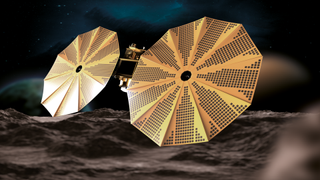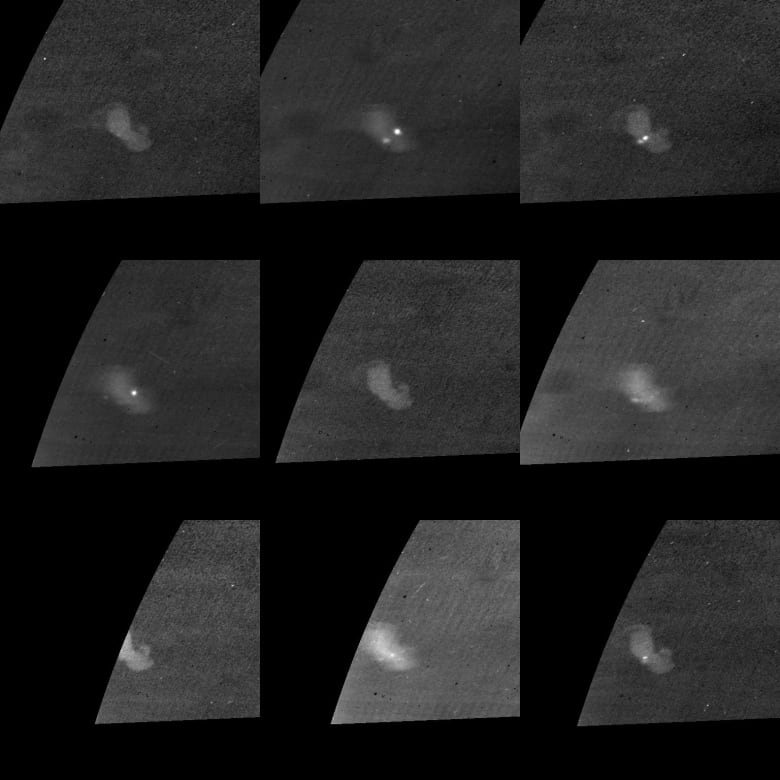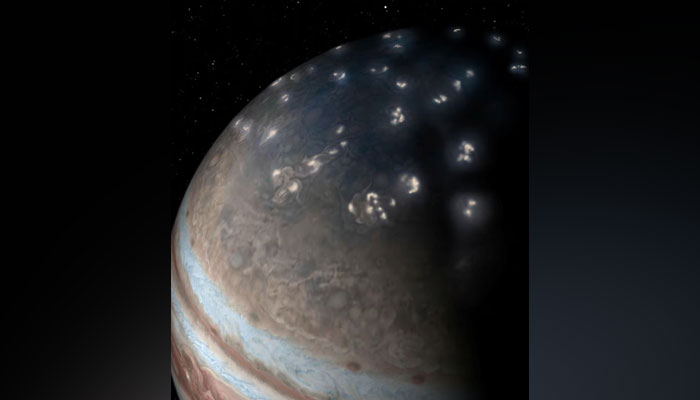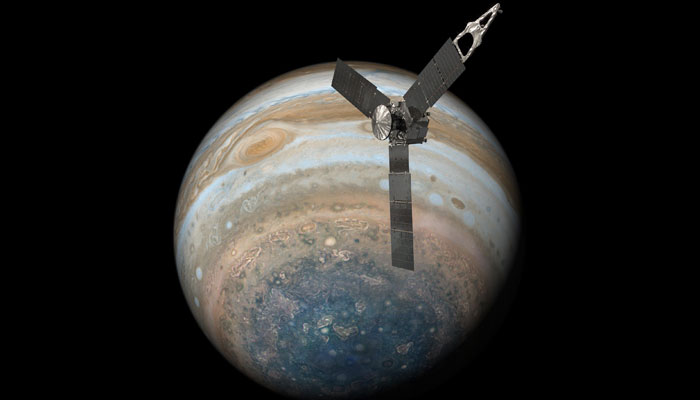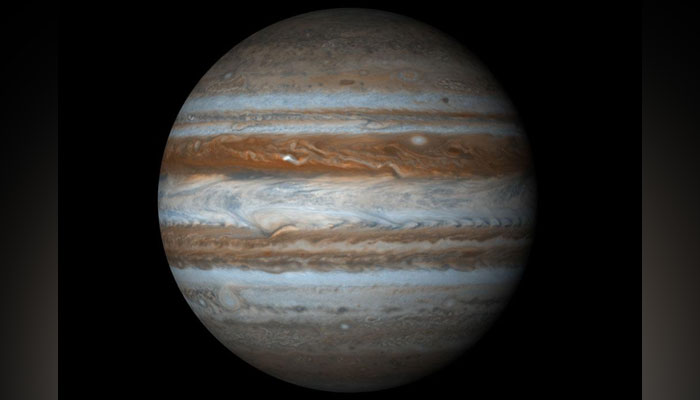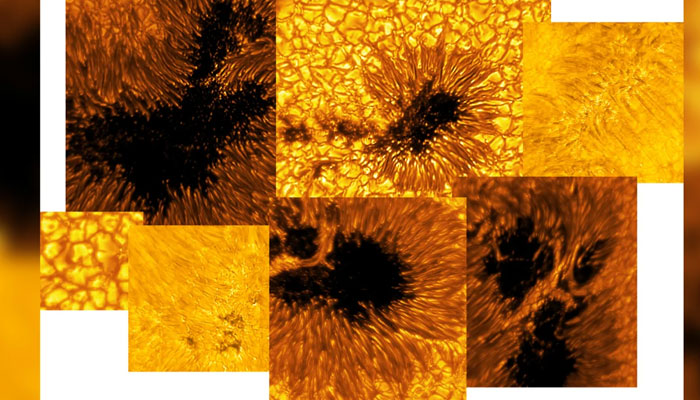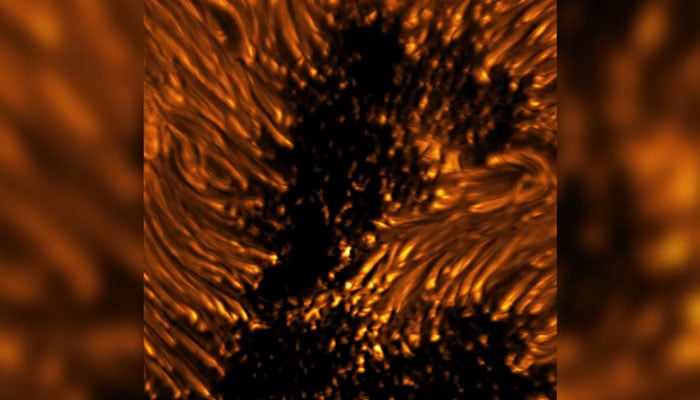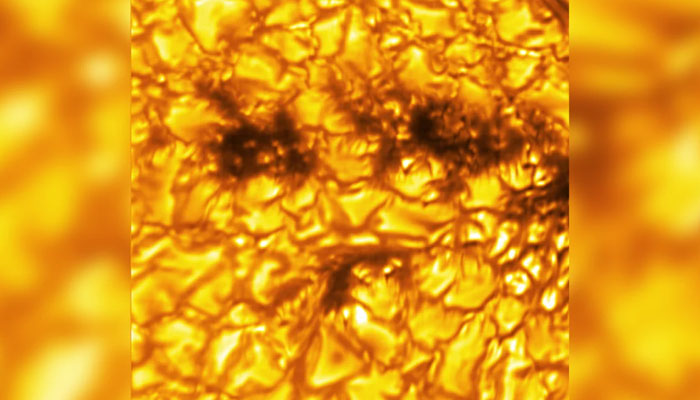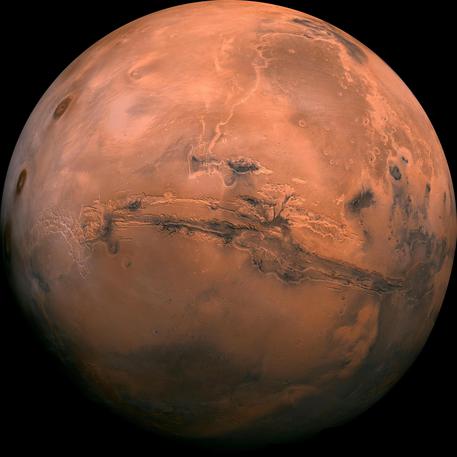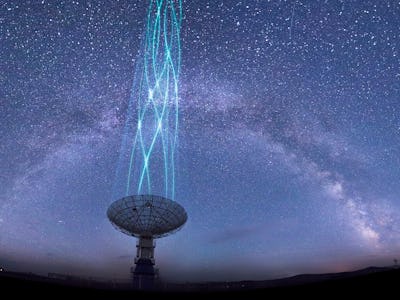See stunning images combining James Webb and Chandra X-ray data
Since beginning science operations last summer, the James Webb Space Telescope has been providing a plethora of beautiful images of space. Now, NASA has shared a new view of some of those images, by combining infrared data from Webb with X-ray data from the Chandra X-Ray Observatory.
The four new images show a variety of cosmic objects like galaxies and nebulae, bringing together observations from different wavelengths to show features that wouldn’t be visible in a single wavelength. As well as Webb and Chandra, the images also incorporate data from the Hubble Space Telescope, which operates in the visible light wavelength, the retired Spitzer Space Telescope which looked in the infrared, and the European Space Agency’s XMM-Newton X-ray instrument and the European Southern Observatory’s New Technology Telescope, which also operates in the visible wavelength.
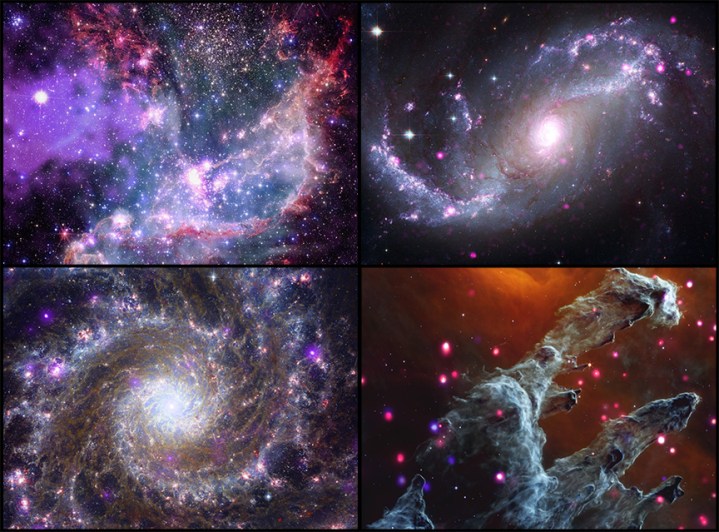
The four images shown above are available in higher resolution on the Chandra X-Ray Observatory website. The top left image is a star cluster called NGC 346, located in a satellite galaxy of the Milky Way called the Small Magellanic Cloud. The infrared data from Webb shows the clouds of dust and gas which are used in the formation of stars and planets. The purple haze is from Chandra data, showing the aftermath of a supernova when a massive star reached the end of its life and exploded, sending out energy and light. Some of the youngest and brightest stars are also giving off X-rays, making them shine in the Chandra view.
Top right is the spiral galaxy NGC 1672, with the stars spread through the galaxy but concentrated in a bar formation across the center. The Chandra data shows purple dots spread around the galaxy, which represent extremely dense objects like neutron stars and black holes. These objects glow in the X-ray wavelength because they pull material away from nearby stars, and as this material approaches the objects it rubs together and heats up due to friction. As this matter reaches temperatures of up to millions of degrees, it gives off X-rays that telescopes like Chandra can detect.
On the bottom row is the spiral galaxy Messier 74 and the famous Eagle Nebula. M74 appears face-on from Earth, which gives a great view of its structure, with Webb data showing the swirling dust and gas and the Chandra data picking out particularly active stars which are giving off X-ray energy. Similarly, in the image of the Eagle Nebula, Webb mapped out the clouds of dust and Chandra picks out the points of light where bright young stars are glowing.
A further set of images combining Webb and Chandra was released last year if you want to see more of these stunning views
The universe looks amazing in new photos from the James Webb Space Telescope and famed
Rebecca Sohn
May 26, 2023·

a spiral galaxy imaged in full color

a four-panel composite image showing different galaxies and nebulas in full color
If you've ever wished you had X-ray vision, NASA has some photos for you.
NASA has released four composite images using data from several of its most advanced telescopes to depict our universe in different wavelengths of light, including data collected by the Chandra X-Ray Observatory, the James Webb Space Telescope (JWST) and the Hubble Space Telescope.
The images, which show two galaxies, a star cluster, and a nebula, are rendered in dazzling colors representing X-ray and infrared radiation, as well as optical light.
Related: James Webb Space Telescope (JWST) — A complete guide
The two galaxies pictured are called NGC 1672 and M74. Categorized as a barred spiral galaxy for its straight, "barred" arms of stars near its center, NGC 1672 is a galaxy about 60 million light-years from Earth. The new composite image shows several areas, especially in its outer arms, emitting intense X-ray radiation, shown in purple. According to NASA, these areas represent super-dense objects, such as neutron stars and black holes, that are pulling material into the galaxy.

a colorful swirl of gases in deep space
M74 is a spiral galaxy like our own galactic home the Milky Way, located about 32 million light-years away from us. Also called the Phantom Galaxy because it is visibly very dim, the galaxy has an intricate lacey structure revealed by JWST. Now, data from Chandra notes multiple sources of X-ray radiation, including young stars, dotting the spiral.

a white and blue spiral galaxy surrounded by stars
Another image shows M16, also called The Eagle Nebula, which is about 6,500 light years away. The image shows the nebula's famous "Pillars of Creation," dramatic clouds of dust and gas containing young stars, the most intense of which are highlighted in brilliant pinks and purples to show the powerful X-rays they emit. The image highlights the finding that most of these young, X-ray-emitting stars are actually outside the pillars, with only a few young stars emitting this intense radiation from within the clouds.

tall pillars of gases in deep space
The image with the most notable contribution by Chandra might be of NGC 346, a star cluster in the Small Magellanic Cloud, a galaxy 200,000 light-years from Earth. A bright purple splotch on the left side of the image highlights the remnants of a supernova explosion, the spectacular death of a huge star.
Read more: This new supernova is the closest to Earth in a decade. It's visible in the night sky right now.

a dense cloud of stars and colorful gases in deep space
RELATED STORIES:
— Milky Way's cosmic neighbors help bring ancient galaxies into focus
— Cosmic monsters found lurking at heart of ancient star clusters by the James Webb Space Telescope
— Private servicing mission could extend life of NASA's Chandra space telescope
The NGC 346 cluster is also speckled with purple-white blotches of X-rays emitted from young, massive stars. This image is unique among the four, as it contains data from not only Chandra, Webb, and Hubble, but also the European Southern Observatory's New Technology telescope, the European Space Agency's XMM-Newton telescope, and NASA's retired Spitzer Space Telescope.
You can find all the photos, including the photos combined to make the composite images and 3D-printable tactile plates of each image, on the Chandra X-Ray Observatory's website.
